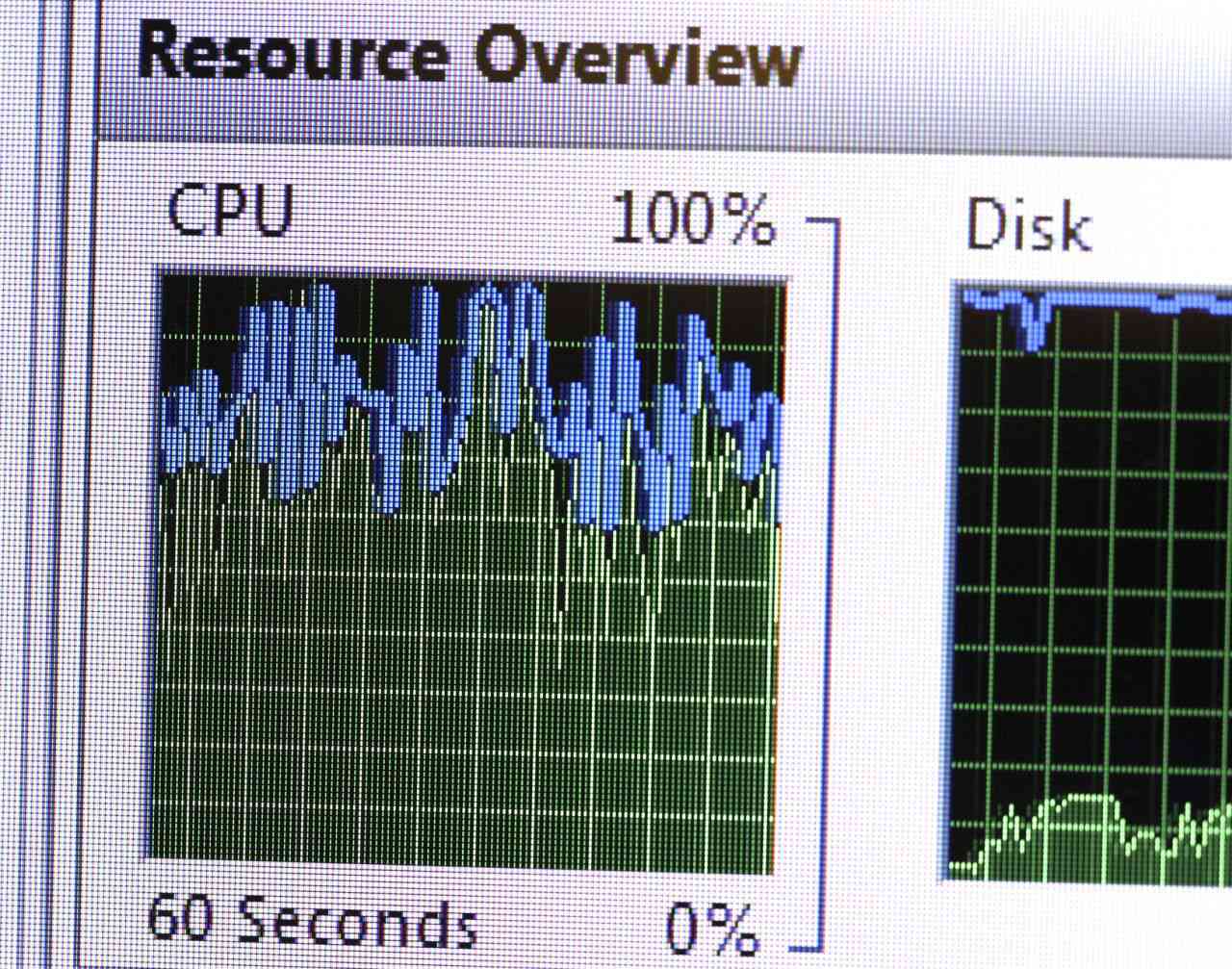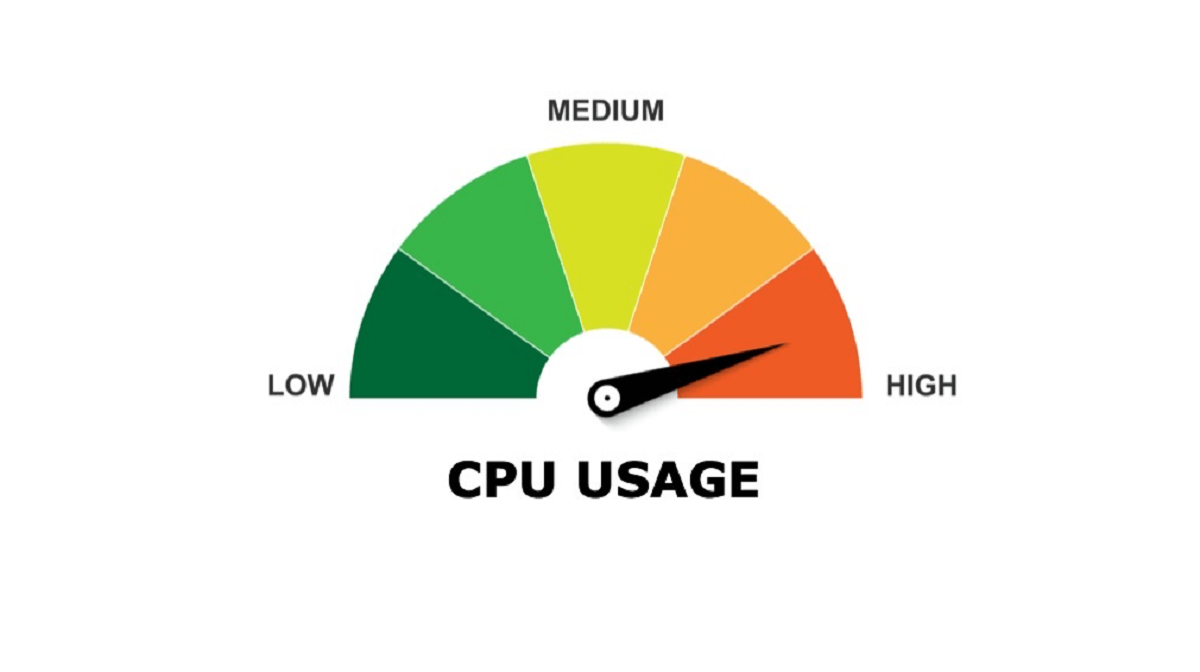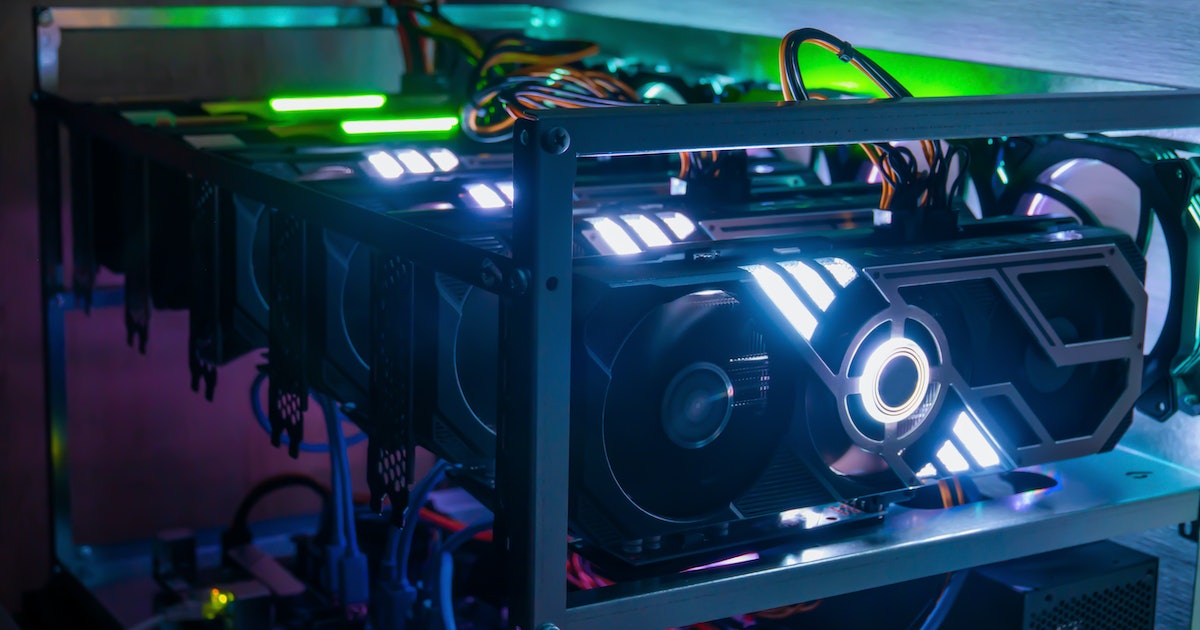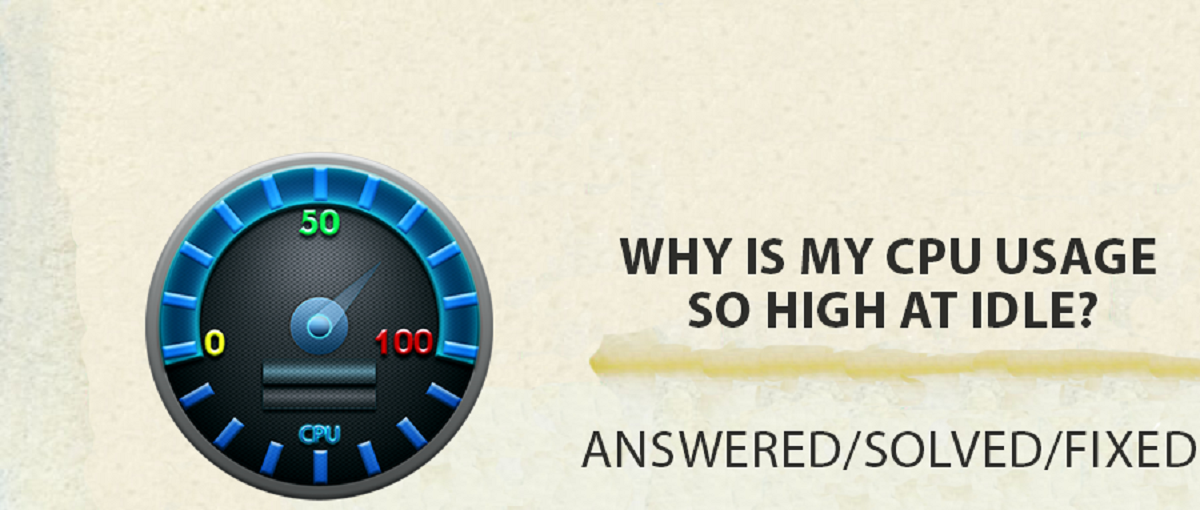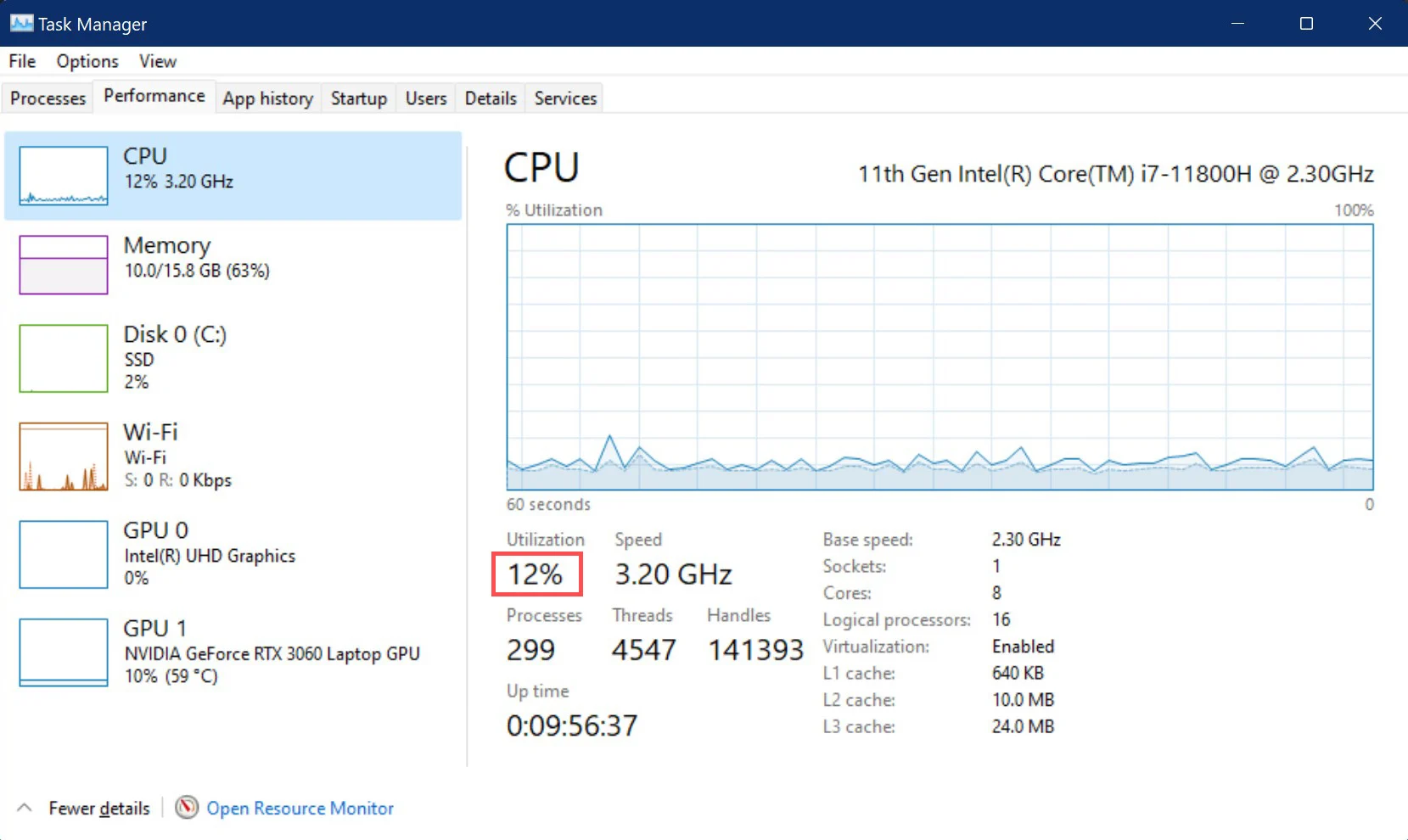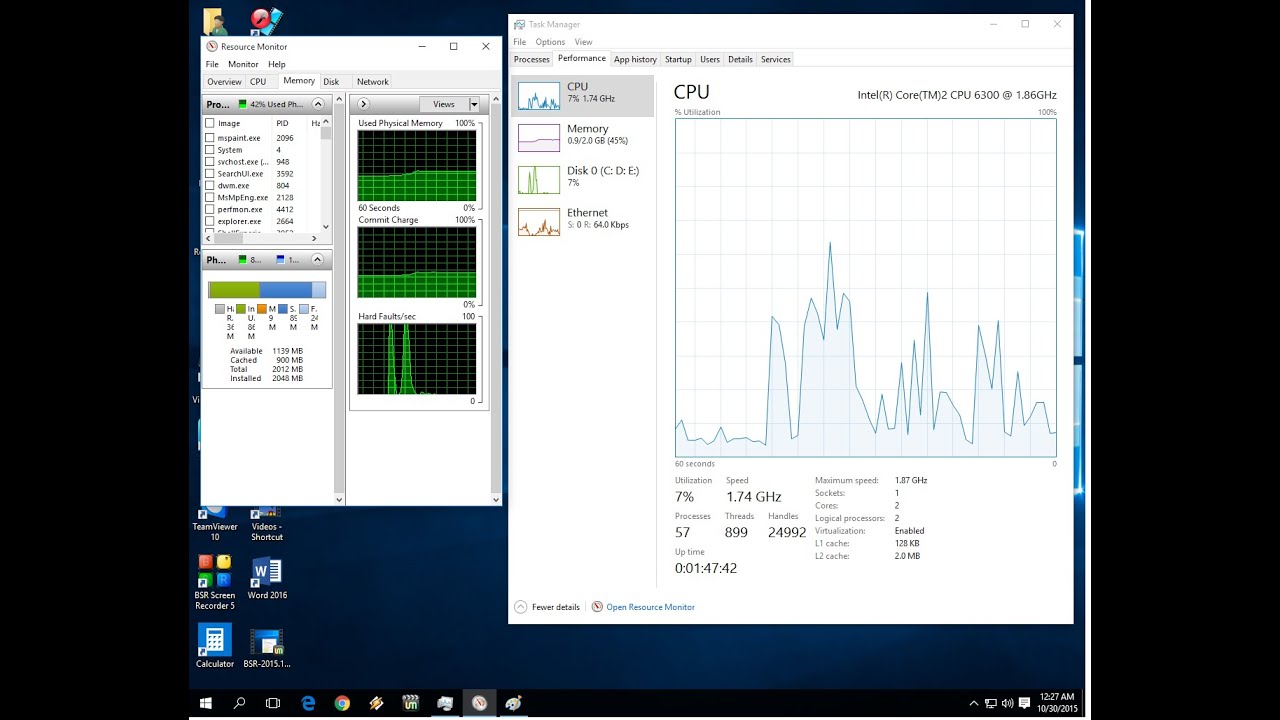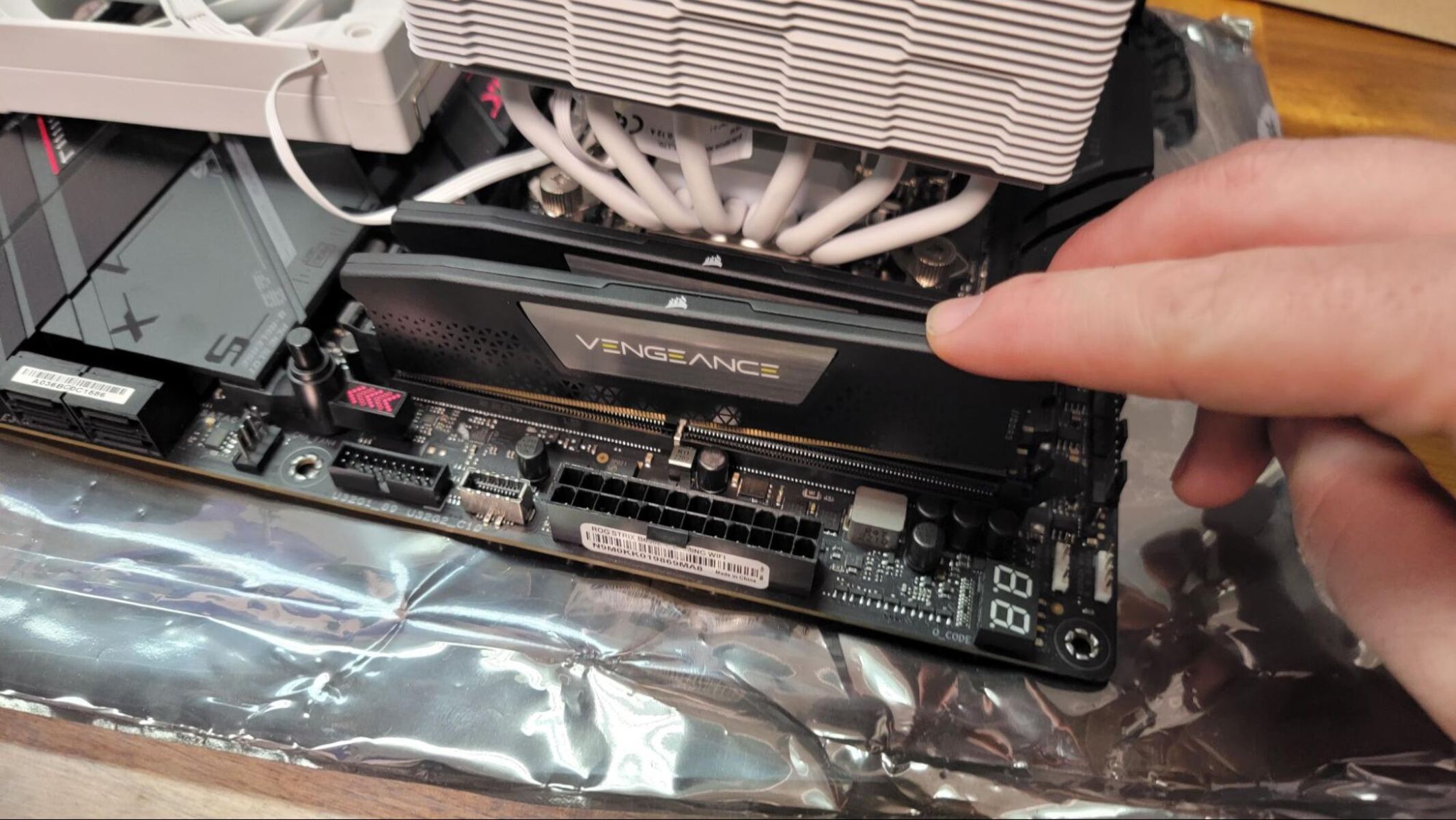Introduction
When it comes to understanding computer performance, one important aspect to consider is RAM usage. RAM, or Random Access Memory, plays a vital role in the overall speed and responsiveness of a computer system. It temporarily stores data that the CPU needs to access quickly, allowing for efficient multitasking and smooth operation of applications.
RAM usage refers to the amount of memory being utilized by the system at any given time. It fluctuates based on the tasks being performed and the programs running on the computer. Monitoring and understanding the normal range of RAM usage is essential for optimizing system performance and ensuring efficient resource allocation.
In this article, we will delve into the intricacies of RAM usage and explore what constitutes normal usage for different scenarios. We will also discuss the factors that can influence RAM usage and share methods for monitoring and optimizing RAM usage.
Understanding RAM usage is crucial because excessive usage can lead to a slowdown in system performance, while low usage may indicate underutilization of system resources. By establishing the ideal range of RAM usage for different tasks and effectively managing system memory, users can maintain optimal performance and minimize the occurrence of slowdowns or crashes.
It is important to note that while RAM usage is an important metric, it is not the sole determinant of system performance. Other factors, such as CPU usage, disk activity, and network connectivity, also contribute to overall system responsiveness. However, RAM usage is a key component that directly impacts the efficiency and speed of data retrieval and processing.
Throughout this article, we will provide insights into the factors that affect RAM usage and discuss the recommended RAM usage percentages for various activities. By the end, you will have a clear understanding of what constitutes normal RAM usage and how to monitor and optimize it for a more seamless computing experience.
Understanding RAM Usage
RAM usage refers to the amount of memory being actively utilized by the operating system and applications running on a computer at a given time. It is important to understand how RAM works to grasp the concept of RAM usage.
RAM serves as the short-term memory of a computer, providing fast access to data that the CPU needs to perform tasks. When you open an application or a file, it is loaded into RAM so that the CPU can quickly retrieve and process the necessary information. The more RAM your system has, the more programs and data it can store in its active memory.
When a program no longer needs to access a particular piece of data, it is released from RAM to make room for other data. This dynamic allocation of memory enables efficient multitasking, as the CPU can quickly switch between different applications and processes without having to rely heavily on slower storage devices like hard drives.
RAM usage, therefore, depends on the number and size of active programs and processes running on a computer. As you open more applications or perform resource-intensive tasks like gaming or video editing, the system needs more RAM to accommodate the increased workload. Conversely, when you close programs or complete tasks, the RAM usage decreases.
Another factor that affects RAM usage is the operating system itself. Different operating systems have varying memory management techniques, which can influence the amount of RAM utilized. For example, certain operating systems may prioritize keeping frequently accessed data in RAM even if it means using a significant amount of memory. Others may have more aggressive memory management strategies that prioritize freeing up memory when it is not actively needed.
It is important to note that RAM usage should not be confused with the total amount of RAM installed in a system. While more RAM generally allows for smoother multitasking and faster performance, the amount of RAM used will depend on the specific tasks and applications being utilized.
Monitoring RAM usage can provide valuable insights into system performance and resource allocation. By understanding how much RAM is typically used during normal operation, users can identify any anomalies or excessive usage that may indicate a problem or the need for optimization. Additionally, monitoring RAM usage can help determine if an upgrade in RAM capacity is necessary for improved performance in resource-intensive tasks.
In the following sections, we will explore the various factors that can affect RAM usage and discuss the ideal RAM usage percentages for different activities. This knowledge will enable users to effectively manage their system resources and maintain optimal performance.
Factors Affecting RAM Usage
RAM usage can be influenced by a variety of factors, including the type of applications and processes running on the computer, the size and number of files being accessed, and the behavior of the operating system. Understanding these factors can help users effectively manage and optimize RAM usage for optimal system performance.
1. Number and Type of Applications: The number of applications running simultaneously has a direct impact on RAM usage. Resource-intensive applications, such as video editing software or virtual machines, tend to consume more RAM compared to lightweight applications like web browsers or word processors. Running multiple memory-hungry applications concurrently can quickly deplete available RAM.
2. Size and Number of Files: RAM usage can also be affected by the size and number of files being accessed. Opening large files, such as high-resolution images or videos, requires more memory to store and process the data. Working with multiple files simultaneously can further increase RAM usage.
3. Web Browser Tabs and Extensions: Web browsers, especially those with numerous open tabs or resource-intensive extensions, can significantly impact RAM usage. Each open tab consumes memory, and extensions that run in the background may consume additional resources. Keeping the number of open tabs to a minimum and disabling unnecessary extensions can help manage RAM usage.
4. Background Processes: Some applications and system processes run in the background, utilizing memory even when not actively used. These background processes can contribute to overall RAM usage. It is important to review the running processes and disable unnecessary ones to free up RAM.
5. Operating System Behavior: Different operating systems handle memory management differently. Some prioritize caching frequently used data in RAM, while others may prioritize releasing memory for other applications when it is not actively needed. Understanding how the operating system manages RAM and adjusting settings, if available, can help optimize RAM usage.
6. Memory Leaks and Bugs: Certain applications or drivers may have memory leaks or bugs that cause them to consume excessive amounts of RAM even when not in use. Keeping software and drivers up to date can help minimize the occurrence of such memory-related issues.
It is worth noting that while these factors can influence RAM usage, it is essential to strike a balance between system performance and efficient resource allocation. Freezing RAM usage entirely is not advisable, as it can lead to slower performance when accessing frequently used data. It is more productive to keep a certain amount of RAM utilized to facilitate faster access to frequently accessed data.
In the next section, we will discuss the recommended RAM usage percentages for different activities, guiding users on what constitutes normal RAM usage in various scenarios. This information will be valuable for monitoring and optimizing RAM usage effectively.
Ideal RAM Usage for Different Tasks
The ideal RAM usage for different tasks can vary depending on the specific requirements and resource demands of each activity. Here, we will explore the recommended RAM usage percentages for common tasks to help users gauge what constitutes normal RAM usage in various scenarios.
1. Basic Web Browsing and Office Applications: For standard web browsing, email, and basic office applications, a RAM usage of around 30-50% is considered normal. These activities generally do not require significant memory resources, and the operating system and applications can function smoothly within this range.
2. Multimedia and Graphic Design: Tasks involving multimedia editing, such as video editing or graphic design, tend to be more resource-intensive. In these cases, it is common to see RAM usage ranging from 50-70%. Memory-hungry applications like Adobe Photoshop or Premiere Pro can take advantage of a higher RAM allocation to provide fast and smooth performance.
3. Gaming: Gaming is another activity that can benefit from increased RAM usage. Many modern games require a significant amount of memory to load and render complex graphics. RAM usage for gaming typically falls within the range of 70-90%. Allocating more RAM to games can help reduce loading times and prevent stuttering or lag during gameplay.
4. Virtualization and Resource-Intensive Tasks: Virtual machines and resource-intensive tasks, such as running multiple operating systems simultaneously or conducting data analysis, require substantial memory resources. RAM usage in these cases can exceed 90% and may even reach close to 100% without negatively impacting performance.
5. Operating System Overhead: The operating system itself consumes a certain amount of RAM for essential background processes and system management. It is normal for the operating system to utilize around 20-30% of available RAM to ensure smooth functioning and efficient memory management.
It is important to note that these percentages are general guidelines and can vary depending on the specific hardware configuration and software requirements. Some applications allow users to adjust the allocated RAM manually, providing flexibility to optimize resource usage based on personal preferences and system capabilities.
Monitoring RAM usage during different tasks can help identify patterns and deviations from normal usage. Frequent spikes in RAM usage or consistently high usage even during idle periods may indicate underlying issues that require investigation, such as memory leaks or excessive background processes.
By understanding the ideal RAM usage for different tasks, users can effectively manage their system resources and ensure optimal performance for the activities they engage in. In the next section, we will discuss methods for monitoring RAM usage and optimizing it for enhanced system performance.
Monitoring RAM Usage
Monitoring RAM usage is essential for understanding how your system is utilizing memory resources and identifying any issues that may impact performance. By tracking RAM usage, you can optimize resource allocation, detect memory leaks, and ensure efficient utilization of available memory. Here are some methods for monitoring RAM usage:
1. Task Manager/Activity Monitor: Most operating systems provide built-in tools like Task Manager (Windows) or Activity Monitor (Mac) that allow you to monitor system processes and resource usage, including RAM. These tools display real-time RAM usage, as well as details about which processes are consuming the most memory. They also allow you to end processes or applications that are using excessive RAM.
2. Resource Monitor: Resource Monitor (Windows) or similar utilities provide more advanced insights into system resource usage, including RAM. It allows you to view detailed information about individual processes, check memory usage patterns, and identify any memory leaks or excessive usage that may require attention.
3. Third-Party Monitoring Tools: Numerous third-party software options are available for monitoring RAM usage. These tools often provide more advanced features and reporting capabilities, allowing you to track historical data, set alerts for high memory usage, and analyze usage patterns. Some popular options include HWMonitor, CAM, and Process Explorer.
4. Command Line Tools: Command line tools like “top” (Unix-based systems) or “tasklist” (Windows) provide a lightweight and efficient way to monitor system resource usage, including RAM, directly from the terminal. These tools give you real-time information and can be automated to provide continuous monitoring.
When monitoring RAM usage, it is essential to establish a baseline to determine what is normal for your system. Observe RAM usage during different activities and note the typical range for each task. This will help you identify any deviations from normal usage and proactively address any issues that may arise.
Regularly monitoring RAM usage can also help in optimizing system performance. By identifying memory-hungry applications or unnecessary background processes, you can make informed decisions on closing or disabling them to free up RAM. Additionally, monitoring can help identify the need to upgrade RAM capacity if you consistently experience high usage during resource-intensive tasks.
Remember that RAM usage can fluctuate depending on the specific applications and tasks you are performing. It is normal to have varying levels of RAM utilization based on your computing needs. The key is to ensure that your system operates within acceptable limits and that excessive usage or memory leaks are addressed promptly.
In the next section, we will explore various techniques for optimizing RAM usage, allowing you to maximize system performance and ensure efficient allocation of memory resources.
RAM Optimization Techniques
Optimizing RAM usage is crucial for ensuring efficient resource allocation and maximizing system performance. By employing the following techniques, you can optimize RAM usage and improve the overall responsiveness of your computer:
1. Close Unnecessary Applications and Tabs: Closing unused applications and browser tabs is an effective way to free up RAM. Keeping numerous applications running simultaneously can consume valuable memory resources. Closing unnecessary programs and tabs not only reduces RAM usage but also improves CPU efficiency.
2. Manage Startup Programs: Many applications automatically start with your computer and run in the background, utilizing valuable system resources, including RAM. By managing your startup programs, you can prevent unnecessary applications from consuming memory from the moment you boot up your computer. Disable or remove applications from the startup list that you don’t need to start automatically.
3. Clear Cache and Temporary Files: Temporary files, cookies, and cached data can accumulate over time and consume substantial amounts of disk space and RAM. Regularly clearing these files can help free up memory and improve system performance. You can use built-in system tools or third-party software to perform disk cleanup and clear the cache.
4. Adjust Visual Effects: Visual effects, such as animations and transparency effects, can be visually appealing but consume memory resources. Adjusting these visual effects or disabling them altogether can reduce RAM usage and improve system responsiveness. Access the system settings or preferences menu to customize visual effects.
5. Optimize Virtual Memory/Pagefile Settings: Virtual memory, also known as the pagefile, is a portion of the hard drive that is used as an extension of physical RAM. Adjusting virtual memory settings allows your system to use a portion of the hard drive as additional memory when RAM becomes limited. Optimizing pagefile settings can help manage RAM usage effectively.
6. Update Software and Drivers: Keeping your operating system, applications, and drivers up to date is crucial for optimal performance. Developers regularly release updates that optimize memory usage and fix memory-related issues. Check for updates regularly and install them to ensure your system is running on the latest, most efficient versions of software.
7. Upgrade RAM: If you consistently experience high RAM usage and performance issues, upgrading your RAM capacity may be a viable solution. Increasing the amount of RAM available can provide more headroom for memory-intensive applications and tasks, allowing for smoother multitasking and improved overall performance.
Remember that RAM optimization should be performed alongside regular system maintenance practices, such as disk cleanup and malware scanning. These practices help maintain system health and optimize performance as a whole.
By implementing these RAM optimization techniques, you can ensure that your system efficiently utilizes memory resources, resulting in improved performance and a smoother computing experience. Now that you have a solid understanding of RAM usage, monitoring methods, and optimization techniques, you can effectively manage and optimize your system’s memory allocation.
Conclusion
Understanding and optimizing RAM usage is essential for maintaining optimal system performance. By monitoring RAM usage and employing various optimization techniques, you can ensure efficient resource allocation and maximize the responsiveness of your computer.
Throughout this article, we have explored the concept of RAM usage and its significance in computing. We have discussed the factors that can influence RAM usage, including the number and type of applications running, the size and number of files being accessed, and the behavior of the operating system. By understanding these factors, users can have a better grasp of how RAM is utilized in their systems.
We have also delved into the ideal RAM usage percentages for different tasks, ranging from basic web browsing and office applications to resource-intensive activities like gaming and multimedia editing. Having a clear understanding of what constitutes normal RAM usage for specific tasks helps in effectively managing system resources and optimizing performance.
Monitoring RAM usage is a crucial practice in detecting anomalies, resource-hungry applications, or potential memory leaks. By using built-in tools like Task Manager or third-party software, users can actively monitor RAM usage and address any issues, ensuring efficient utilization of memory resources.
Additionally, we have discussed various RAM optimization techniques, such as closing unnecessary applications and tabs, managing startup programs, clearing cache and temporary files, adjusting visual effects, optimizing virtual memory settings, updating software and drivers, and considering upgrading RAM capacity. By implementing these techniques, users can make better use of available memory, resulting in improved system performance and responsiveness.
Remember that RAM usage should be considered in conjunction with other hardware and software components of your system. CPU usage, disk activity, and network connectivity also play important roles in overall system performance.
In conclusion, RAM usage is a critical aspect of optimizing system performance. By understanding what constitutes normal RAM usage, monitoring usage patterns, and implementing optimization techniques, you can ensure efficient resource allocation, maintain system responsiveness, and ultimately enhance your overall computing experience.









